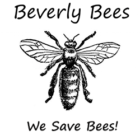Requeening – When A Queen Stops Laying
Brian’s hive Squill has been having Queen related issues from the get-go. After installing the bees from a package, they did not accept their queen immediately. Then finally caved and set her free. The queen started laying with a beautiful brood pattern. That only lasted a few weeks before the hive became honey bound. After giving them empty drawn comb and extracting some honey filled frames the queen was still not laying. Apparently she was mated poorly and it was time for her to go. The morning we were scheduled to pick up the new queen, Brian did the honors and “off with her head err…her butt” he squished the old queen with his hive tool. He then put the dying queen back inside the hive so the bees would know she was fatally injured.
The next stop was to a local queen supplier to pick up Brian’s new queen. The only queens they had in stock were Carniolan Queens from California. These queens were open mated in a Carniolan bee yard. Our new queenie was unmarked when we picked her up but the supplier said he would gladly mark her and we watched as he took her out of the cage, let her fly to a window and marked her with a yellow marking pen. She was smaller in size than the Italian queen that came with Brian’s package but similar in size to the queen my overwintered Italian hive made last year.
I was glad he took the time to mark the new queen for Brian because she was small and dark and hard to spot. As a new beekeeper, Brian is still learning to recognize the queen on the frames. Marked queens are MUCH easier to find. This new queen was dark colored as Carniolans are and did not have the light orange rear end the Italian queens have that makes the Italian queens easy to find. All the hives currently in the apiary are Italians or Mutts so it will be interesting to see how the Carniolan hive compares.
Here is the fiesty new queen in her cage. While this is not the clearest picture it shows her dark coloring well. You can see a picture of the old Italian queen here.
After we brought her home, it was time to put her into the hive. Since this hive had no brood at all, few nurse bees would be left in the hive by the time the new queen starts laying. Nurse bees are younger bees and the ones who take care of the babies. This would make it harder for the hive to raise new brood. So I snagged a frame of mostly capped brood and clinging nurse bees from Crocus (it was only fair after all Squill had given Crocus plenty of honey) and placed that on a frame holder next to the hive.
What happened next was just amazing! As soon as I put this frame next to the hive bees on the top bars began fanning immediately and bees inside the hive began to exit the hive and head toward the frame. They were so happy to have baby bees after 3 weeks with nothing they were fanning like crazy!
The bees quickly moved over to the frame and covered it. 
Here is a video so you can get the full effect of the excitement. These bees were so happy to have baby bees again!
After watching this incredible scene by the bees, I then moved a few frames over and pushed the new queen against the wax comb on a frame and sandwiched it against the adjacent frame.
A few bees paid notice. But most were more interested in the frame of brood. The bees were more excited for the frame of brood than the new queen!
A few days later this queen was released by the bees when they chewed a hole in the candy plug. Now get to laying Carniolan Queenie! This hive needs new baby bees!
Other Posts You May Enjoy:

